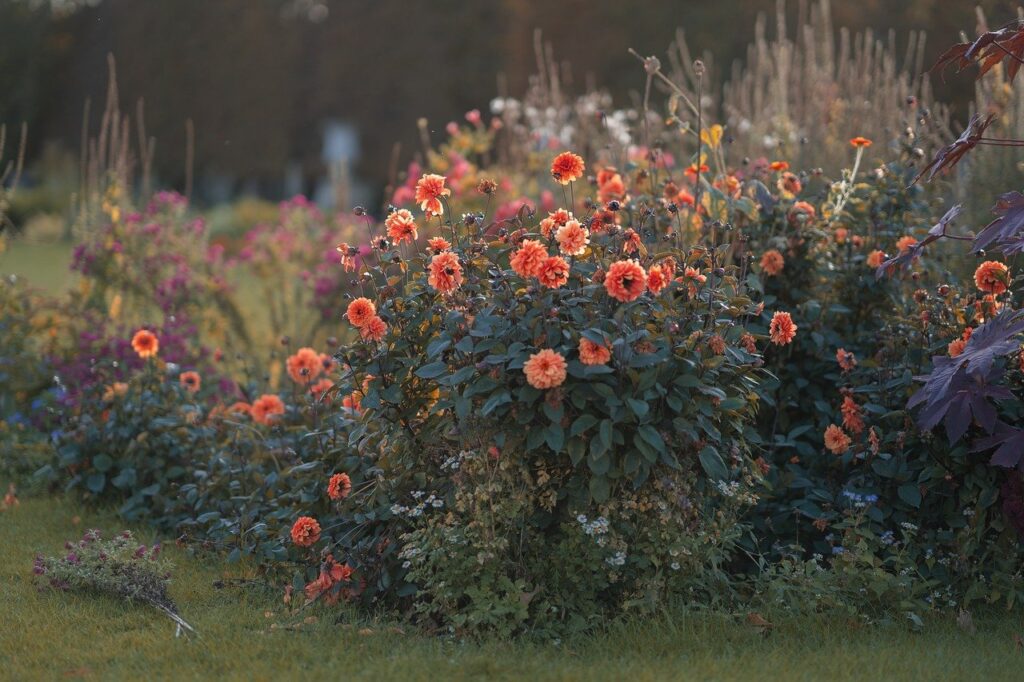Companion planting is a gardening technique where certain plants are grown together to benefit each other in various ways, such as pest control, pollination, and nutrient enhancement. When it comes to flowers, companion planting not only promotes healthier growth but also enhances the visual appeal of your garden. Here’s a guide to help you master the art of companion planting with flowers:
Understanding Companion Planting
Companion planting is based on the principle that certain plants have beneficial effects on neighboring plants, improving their health and yield. These effects can include repelling pests, attracting beneficial insects, providing shade or support, and improving soil fertility through nutrient cycling.
Choosing Complementary Flowers
Select flowers that complement each other in terms of growth habits, bloom times, and nutrient needs. Here are some popular combinations of flowers that thrive together:
1. Marigolds and Roses
Benefits: Marigolds deter aphids, nematodes, and other pests that can damage roses. Their vibrant colors also contrast beautifully with roses, enhancing the visual appeal of your garden.
How to Plant: Interplant marigolds around rose bushes or in between rose rows to provide natural pest protection.
2. Lavender and Echinacea
Benefits: Lavender attracts pollinators such as bees and butterflies, which also benefit Echinacea (coneflowers) by increasing pollination rates. Both plants thrive in similar sunny, well-drained conditions.
How to Plant: Plant lavender and Echinacea together in sunny borders or mixed flower beds to create a fragrant and pollinator-friendly garden.

3. Nasturtiums and Tomatoes
Benefits: Nasturtiums act as a trap crop, attracting aphids away from tomato plants. They also repel whiteflies and squash bugs, while their trailing vines provide ground cover to reduce soil erosion.
How to Plant: Plant nasturtiums around the base of tomato plants or in nearby containers to protect tomatoes from pests and add a splash of color to your vegetable garden.
4. Sunflowers and Cosmos
Benefits: Tall sunflowers provide shade and support for shorter cosmos plants, creating a visually striking combination. Sunflowers attract pollinators and beneficial insects, while cosmos add a delicate, airy texture to garden borders.
How to Plant: Plant sunflowers as a backdrop with cosmos planted in front to create a layered effect. Ensure both receive adequate sunlight and well-drained soil.
5. Dahlias and Salvia
Benefits: Dahlias provide bold, colorful blooms throughout the summer, while salvia’s upright spikes of flowers attract hummingbirds and butterflies. Both plants prefer similar growing conditions and benefit from deadheading to promote continuous blooming.
How to Plant: Combine dahlias and salvia in mixed borders or cottage garden settings to create a vibrant and wildlife-friendly garden display.
Implementing Companion Planting Techniques
When implementing companion planting with flowers, consider the following tips to maximize benefits:
- Planting Density: Space plants appropriately to allow for airflow and prevent overcrowding, which can lead to disease.
- Succession Planting: Plan for succession planting to ensure continuous blooms and pest control benefits throughout the growing season.
- Crop Rotation: Rotate companion plants annually to prevent soil depletion and reduce pest build-up.
Conclusion
Mastering the art of companion planting with flowers not only enhances the health and beauty of your garden but also creates a harmonious ecosystem where plants support each other’s growth. Experiment with different combinations and observe how they interact to discover the perfect companions for your flower garden. By incorporating these principles, you’ll create a vibrant and thriving garden that delights both you and beneficial wildlife throughout the seasons.










When the amphitheater had cleared I crept stealthily to the top and as the great excavation lay far.
He pays regular, was the rejoinder. But come, it’s getting dreadful late, you had better.
Then going through some small strange motions with it—whether indispensable to the magnetizing of the steel, or merely intended to augment the awe of the crew.